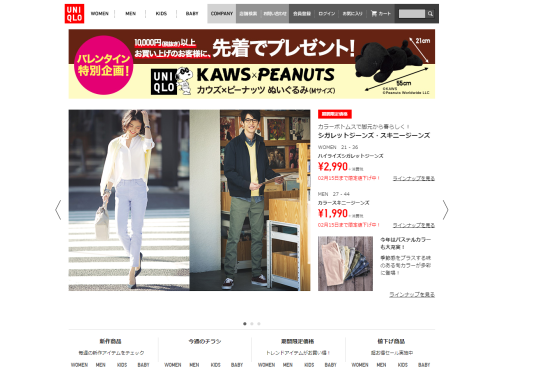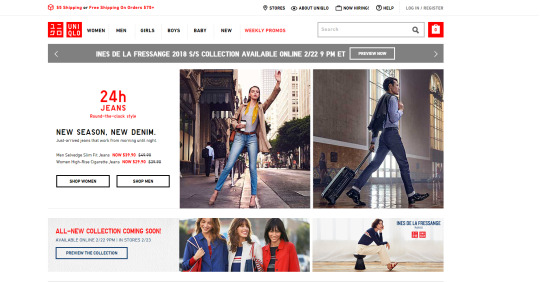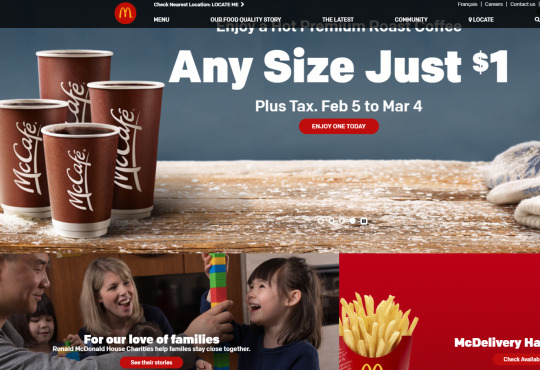#user behavior

As the debate of meat eating versus vegan diets continues to resonate online and across the supermarket isles, I was surprised to read what can be regarded as something of a rare happening with Tyson Foods investing in non-meat produce crafted by a vegan start up.
Has hell frozen over? Not exactly even if major changes do happen across the industrial realm where some companies manage to understand what’s the future like. By saying this I’m not making a prediction that in near future we will stop eating meat all together; however, winds are blowing towards a direction that sees valid alternatives to traditionalism in food.
I’d like to point out first one issue that is often ignored when we debate meat and how it’s delivered on out tables. When speaking of animal farming we are all aware of the poor conditions some pastures are placed in order to maximize profitability. Endless quantities of meat constantly appear across thousand of supermarkets of all size in our country, creating a market behavior that does not directly reflect the consumer demand, but it’s the correlation between animal farmers and distributors (aka supermarkets) where the game is played.
We can asses that by analyzing the large amount of beef, pork, chicken, along with the relative byproducts, which are thrown into the garbage every week by grocery stores because it becomes unsold and close to expiry date. So, in essence blaming families as the main cause of animal conditions is not fair, but it’s the display of abundance distributors (aka supermarkets) perpetrate which drive the production demand high with the waste.
Tyson Foods is one of the largest North American dealer in terms of animal products from big restaurant chains to the frozen food section where many shop. The scale of manufacturing and client sale is very big and very lucrative, with a noticeable impact that comes with influential behavior since millions of people eat these products.
Beyond Meat, the vegan startup, has been producing valuable alternatives to burger patties that aesthetically look like any ground beef you could use to slap on your BBQ grill, and allegedly critics who have tasted it can confirm the similarity with the original animal product. Packages are already available across different grocery stores in the US and are planned to expand beyond the border. It’s essential to monitor if this deal continues and how this protein alternative can influence the markets and competitors.
This shift in behavior is nonetheless very interesting because it places a name like Tyson, often denounced for cruelty against its chicken and cows, changing the tune of their score and able to understand the trends happening out there not only on the internet but among communities.
Tyson knows that meat prices will continue to go up and its product consumption risks to go down; a major shift in dietary habits among the population translates in billions in losses. In the last twenty years we have seen all sorts of boycotting against fast-food meals and processed food, fields in which Tyson is fully responsible and well placed among.
In order to begin a portfolio diversification to develop with solid grounds, Tyson is making the smart move not to continue placing all its eggs in one basket. Investing in future trends proves to be a test against core industrial values that defy the traditionalism of certain markets. This also plays well on Tyson’s PR strategy so it can wield the ‘environmentally friendly’ card to the media, and who knows, perhaps a change in their marrow philosophy.

Melbourne millionaire Tim Gurner went off to fame recently after stating on the TV program 60 Minutes, that millennials ought to save by skipping on their expensive avocado toasts in order to buy their dream home. Avocado toasts are now the new BigMac index on purchasing power.
Things change quite fast in the age of information where the economy doesn’t serve well as much as it did for millennials’ parent. Back then household expenses were limited to the analog world of mortgage payments, groceries, and transportation bills.
Today the door revolves the other way. The new generations have different goals that don’t reflect the Baby Boomers’ ambitions and we all should take notice about it. The Avocado Toast Index is becoming the new marker of the purchasing power for which this new generation of tech-citizens is being measured for.
Some may argue that: “When I was trying to buy my first home, I wasn’t buying smashed avocado for $19 and four coffees at $4 each,” isn’t the way to approach financial independence. However, we should argue over what brought spending that much on a veggie toast since it’s so popular.
Millennials are drifting away from repeating the financial patterns of their parents and getting into debts by mortgaging an over-inflated piece of property they can release in 20 to 40 years from now from their bank. Millennials tackled the new reality of economics by denying the old approach of becoming subjugated to indebtedness.
Those born between the 80s and the 90s are defying the status quo by following their own interests on housing rental and purchasing, away from any real estate expectation. Millennials prefer living downtown cities in order to experience the city lifestyle without the stress of the suburban commuting and social isolation.
Markets ought to observe this generation much closer without drawing cheap and antiquated marketing data conclusions. There’s a lot that needs to be analyzed and understood from the millennial user point of view which can bring favor to many companies that are willing to listen.
There’s so much we can learn from the Avocado Toast Index because it has now given us a way to understand the spending habits of a growing and intelligent community.

The presence of digital markets has changed the relationship between the user and companies; the engagement of behavior and values is today more sophisticated because of the introduction of variable in the UX. Too many companies still struggle understanding how to connect with their customers.
It’s important to makes sure companies understand their target audience quite well in order to assume the product/service meets the user expectation. Many startups fail in their early years because stakeholders do no focus on the user side. Creating a product comes with a complex structure of passages and too often companies loose sight of their target audience.
This happens when the business persists with conservative marketing strategies that belong to the analog era and don’t consent innovation to happen. Designers begun to break away from the traditional doctrine of the marketing department to seek new philosophies, simply because there’s much more than just using analytical data and projections to address the user’s identity.
The best vivid example of disrupting the traditional scheme of strategic thinking can be attributed when Apple introduced theiPhone. A company that had nothing to do with the telecom field managed to swipe clean a market, introducing something they never worked on before. Then we all know what happened to the conservative approach on UX design where the Blackberry almost disappeared from the market because the managing team couldn’t understand the new approach to touch screens.
This is what companies can learn from designers: move away from your comfort zone and embrace changes to stay competitive, even if crazy ideas are thrown on the table; they are worthy to be considered. Consumer behavior changes very fast through external factors that cannot be controlled by companies, so it’s essential stakeholders follow a progressive UX design that has the ability to truly connect with the user in order to cater to its needs. Without that companies are just building products and services just for themselves.

The famous porn video-hosting website Pornhub has once again made headlines for its peculiar content, but not what you think. This time it has nothing to do with XXX titles or soft-core, but the website is hosting some of the forbidden topic YouTube has taken action against; this time is about guns since the incremental weapon assault against civilians happening in the US from Las Vegas to Florida.
Here’s the link to one of the gun video from the channel In Range TV Show(WARNING: NSFW link video!!!). If you cannot watch the video I’ll explain it briefly to you. Two guys in camouflage uniform are at a shooting range discussing about pistols, in this case the famous Glock manufacturer, with all the pros and cons of the weapon. Each of the guys pitches in what’s their opinion their view and the video continues with them in action at the range (not THAT action).
It’s interesting how change has affected the online platforms after real life events unfolded in tragic occasions, defining discussion policies that are influencing what video channels can host and what content creators can discuss. In light of this shift of wind, several Youtubers have been posting for the past months essays and v-logs arguing that free speech is important, that forbidding certain topics like guns, Islam, terrorism, shootings, violence attacks, is censorship and there ought to be a transparent conversation in order to address these problems to resolve them.

Sex, guns, violence, are being marginalized once again into a specific platform just like it happened 60 years ago with pulp magazines.
What is interesting here is how a platform like Pornhub has begun changing its behavior. Forbidden topics unable to be hosted on YouTube and other hosting sites had to converge onto pornography hosting portals to survive. The taboo effect has created a new behavior that might reshape the way we see adult-themed websites; they will diversify their capability and portfolio offering content creator the chance to upload what other platforms forbid.
This is a whole new economy for places like Pornhub that can offer a new type of service and monetize it, without the effort of advertising or actively stealing the user-base from YouTube. The need for content creators to expand their video channel has been met by an unlikely platform originally born to host hardcore material.
I wouldn’t be surprised if YouTube looses the opportunity to fix their topic policies, or to open a whole new branch dedicated to content that cannot exist on their original brand anymore. What In Range TV Show has done was to adapt to their need to supply their viewers with uncensored material -something that has been disrupted- and they did so the smartest way that has already prompted others to do the same. This is the first and clear signal YouTube has to think about in terms of user behavior if they don’t want to loose millions of followers, views, and monetization.

For those who are seasoned sailors of the web, especially if you come from the 90s, you have probably browsed thousands of web pages form around the world and managed to find all kinds of content across several languages.
Ever since the beginning of the Internet 2.0 web design started to become more conformed around certain standards, especially since globalization widened communication channels, with users preferring certain standards than others. Shapes, colours, formats, images, sounds, and much more, evolved in various entities becoming common praxis or iconic styling.
While browsing logo brands across countries I found a very interesting layout in the Japanese web design that immediately struck me. Intercontinental names like KFC,McDonald’s,Uniqlo, presented distinct layouts in their web pages.

Layout necessity or Japanese simplicity? [kfc.co.jp]
KFC came across with their Japanese homepage that relied less on images and more on information compared to its US counterpart. Large pictures and minimalism are the convey method to present products in North America; it’s a faster way to appeal to visitors and customers with an engagement relying on pixels rather than text.

Stories and ethnicity have become a big part of corporate strategies. [kfc.com]
In the case of KFC I immediately noticed the vertical Japanese layout versus the horizontal American one. Different scrolling directions for websites that might change the user experience and information output; however, there are questions we can ask:
- Is this about Japan being famous for maximizing their physical space by ‘verticalyzing’ everything?
- Is this layout a much better solution because the Japanese user base heavily relies on mobile and tablet technology and their vertical displays?
- Do Japanese value information through text more than pictures?
Upon asking myself these questions I searched a bit more on the topic and found a very interesting article from Moravia.com about Japanese web design. There are elements the Asian user does not share with the Western one, and surprisingly text is and remains an essential portion of the information on websites and publicly displayed data, including billboards and flyers.

A preference for written information is what Japan likes. [uniqlo.co.jp]
Uniqlo shows on its homepage a different ratio of images/text compared to the US website. Somehow the Japanese choice of web structure seems outdated compared to the West, nonetheless its function if what the users in that country want. Product details appears to be the most relevant information for Japan customers; they value technical data more than product pictures.

Western web design aims to increase the image percentage in order to become a catalog for users to check from any device. Pictures convey more data to customers since they are easier and faster to browse. The attention span people carry shortens as time goes by and companies don’t want customers to become bored reading too much of just one product. It can hurt sales. The User Interface design changes to fit the task the user wishes.

MdDonald’s Japan has a striking visual design proposing original alternatives. [mcdonalds.co.jp]
Beside serving different items, McDonald’s website in Japan shows the different approach on the graphic appeal to the point the logo fades in the background. Odd products are renown to be featured among the Japanese marketing machine for their ability to strike the user. However, American customers are spoiled by the perfect symmetry and repetitive look of the goods they buy, often relying on the same old reference picture as guidance to their spending habits.

The US websites works more as a central information hub [mcdonalds.com]
McDonald’s US websites proposes a seasonal engagement to promote their offers in the form of coffee, along with their information on how their relationship with customers evolves in terms of new services or outreaches to the community. North American markets have to account for the diversity in ethnicity and cultural elements Japan does not have; this translates into a different set of rules web design and user experience will undergo.
Beside the cultural difference between Japan the North America, Japanese have a genuine curiosity on details we often miss. Their ability to collect information via text is superior to other countries; this gives them the edge to craft exhaustive experiences often dwelling into perfectionism. It’s more about quality than anything else.

Google has launched its Bulletin service allowing users to report local stories within a community level base. So far this service appears to be available on selected areas and through early access. This might open a whole new scenario where people will gain the ability to craft news stories regarding a well-defined geographical volume they dwell.
According to their official launch page the info goes:
- Impactful: Bulletin helps you tell the stories that aren’t being told
- Open: Bulletin stories are public and easy to discover: on Google search, through social networks, or via links sent by email and messaging apps
- Effortless: No setup is required to create a story - all you need is a smartphone
This new reporting system will likely allow Google to understand more of the user movement in data sharing along with its behavior. From micro data production of the individual to the macro evolution of the information. The architecture of information is being constructed to understand how the single individual acts and reacts in its private environment, all the way to the local level with other peers.
This will grant a whole new level of understanding how society moves and communicates with the following:
news source- every user can provide a set of information package ranging from events happening within their geographical volumes. This could generate true sources but it will carry a steady stream of fake news;
user behavior- each person can broadcast movement, purchasing information, collateral data, that Google can use to its own advantage. This will generate new and updated profiles on what the user does inside a specific environment, thus more accurate details on all levels;
data- all in all the free usage of this services revers to the gathering, analysis, trading, selling, of the users’ profile and everything in it from Google.
Each smartphone with the outputting data that provides and with the addition to this new service, will grant Google a whole new architecture platform onto which extrapolate user behavior, financial data, and everything necessary to upgrade their information grip on the population.
